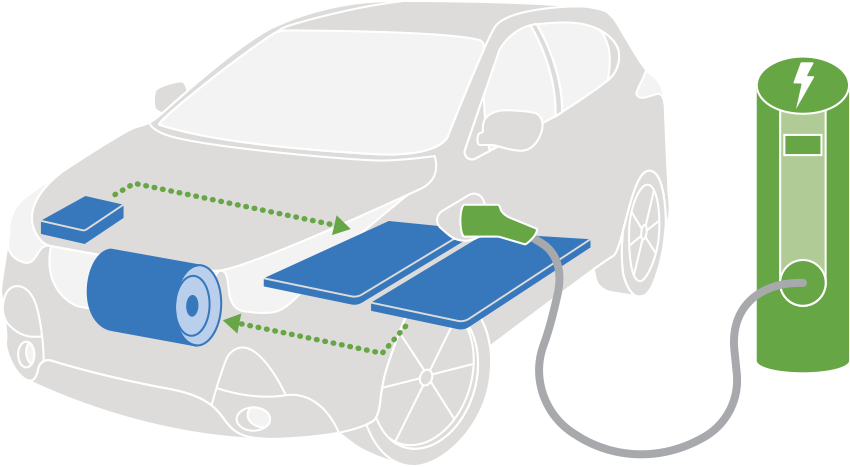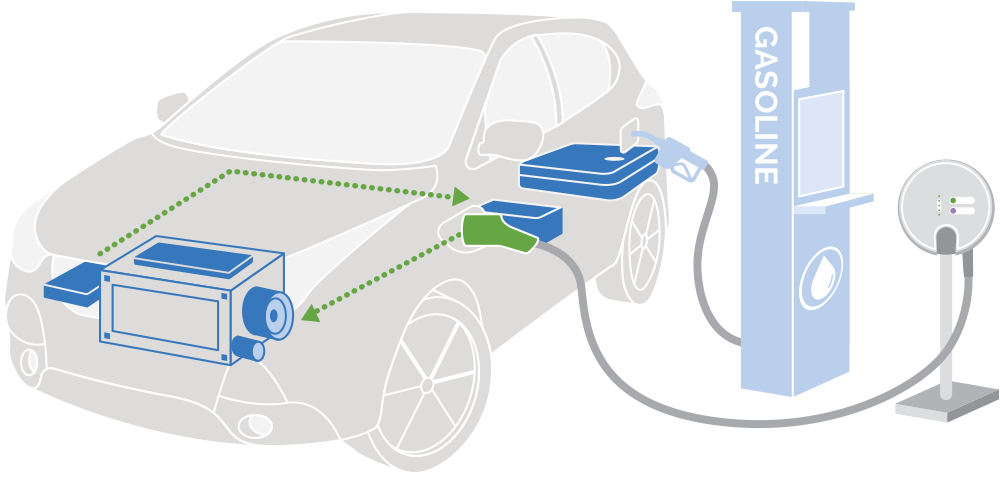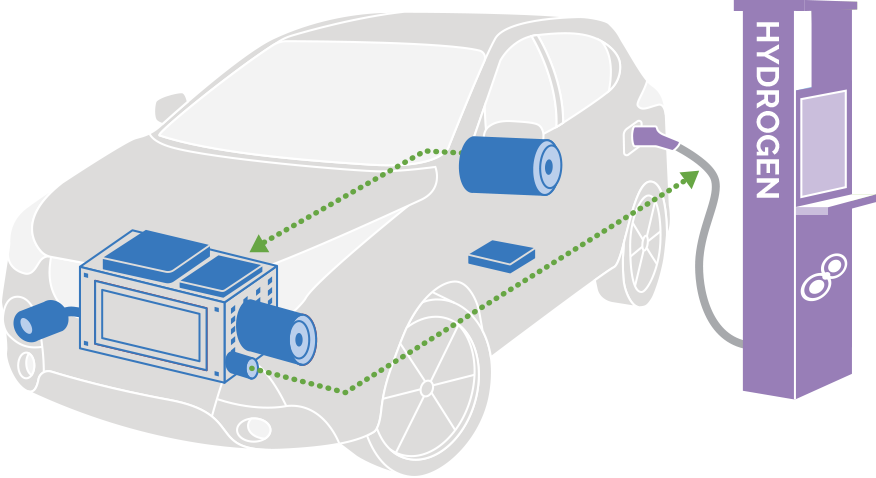Electric Vehicle Basics
You see them on the highway in the carpool lane, in town, and zipping by on busy city streets! Electric vehicles are fun to drive, save you time and money and are good for the environment. Electric vehicles provide a new driving experience.
Electric Vehicle Types
There are three different types of electric vehicles designed to meet different driving needs. They are all-electric, plug-in hybrid electric and fuel cell electric.

All-Electric Vehicles
All-electric vehicles (commonly referred to as EVs or BEVs) don’t use gasoline, and instead have a large battery that powers one or more electric motors. Currently, all-electric vehicles have a driving range of 80 to more than 300 miles, with ranges increasing as new models are introduced. In addition to driving past the gas station, all-electric vehicles don’t require much maintenance (such as oil changes, smog checks, spark plug changes and replacing a catalytic converter or various other parts that wear out and break down) compared to gas cars.
All-electric vehicles can be charged at home using standard 120-volt or 240-volt house plugs, or away from home at public or workplace charging stations. One benefit of all-electric vehicles over plug-in hybrids is the capability to use DC fast chargers, which provide more than 100 miles of range in 30 minutes.

Plug-In Hybrid Electric Vehicles
Plug-in hybrid electric vehicles (commonly referred to as PHEVs) offer both gas-only and electric-only driving—even at relatively high speeds. With smaller batteries than battery electrics, plug-in hybrids achieve an electric-only range of 20-55 miles, during which they produce no tailpipe emissions. When the car uses up its electric range, it switches to gas and drives just like a conventional car.
Because most Californians commute less than 30 miles, most plug-in hybrid electric driving can be done in electric-only mode.

Fuel Cell Electric Vehicles
Fuel cell electric vehicles (commonly referred to as a FCEVs) run on electricity, but do so differently than all-electric vehicles or plug-in hybrids. Its power system is composed of numerous cells combined into a stack that chemically combine hydrogen gas from the car’s tank and oxygen from the air to produce electricity.
Fuel cells have a driving range of 300-400 miles on a single tank and can be refueled in about five minutes at hydrogen fueling stations, which are becoming more common in California.
They also have all of the perks of an electric vehicle, including a smooth, quiet ride, incentives and are eligible for the carpool lane decal to help you hop in the carpool lane. An additional benefit for fuel cell drivers is that auto manufacturers provide three years’ worth of free hydrogen fuel.
Thank you to the California Air Resources Board for their contributions to this section.
On The Market
The number of electric vehicles in California is on the rise. Electric vehicles are not concept cars, but are here now and will meet all your driving needs.
Today there are 80+ different models of electric vehicles available in California and many more on their way. Now is the time to see which electric vehicle is right for you!
Types of Electric Vehicles
- Crossover
- Hatchback
- Minivan
- Sedan
- SUV
- Sports Car
- Trucks
Benefits
Electric vehicles provide unique benefits that you don’t get from a gas-powered car. Drivers have the opportunity to save money, time and the environment with an electric vehicle.






